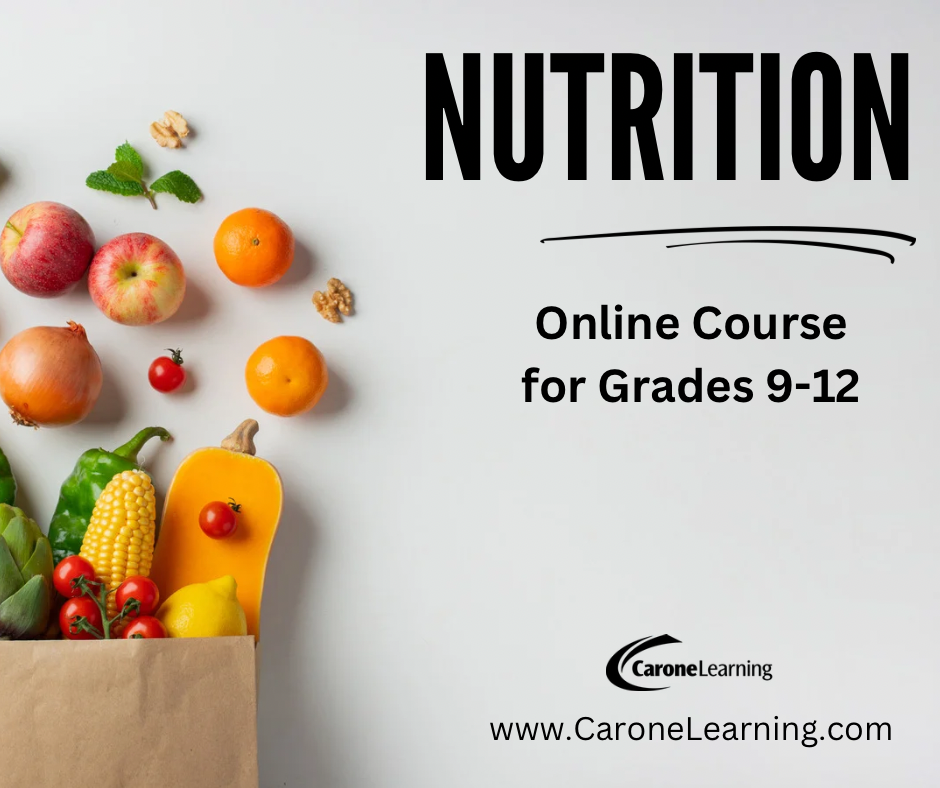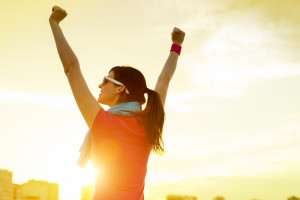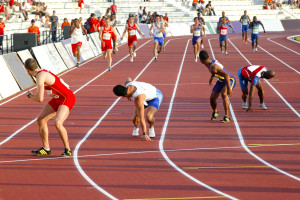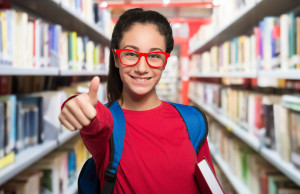
Enroll now! https://caronelearning.com/about-us/about-cfitness-academy/

A lot of people may doubt the effectiveness of online physical education. Can students really learn what they need to learn? Do students really gain the long-term benefits of a health and fitness education?
A researcher from the University of Tampa reached out to Carone Learning asking if we’d be willing to participate in a research study comparing the perceptions of students in traditional/ face-to-face health and PE classes with those of our online students at our Carone Learning Academy.
The researcher independently collected course evaluation data from our online students as well as students at a traditional/ face-to-face school. And what were the results? See for yourself:
(The following is taken from the Jan 2020 published study abstract. You can find the full peer-reviewed journal article here.)
The online education setting was found to be statistically significantly more favorable for students in terms of the feedback and responsiveness of the teacher, understanding and interest of the content and perceived positive health changes during the course. The qualitative findings on student perceptions were relatively consistent between both the online and F2F classes.
The results indicate that students’ positive perceptions in an online high school class may equal or surpass those in a traditional F2F format. Increasingly, youth are exhibiting enhanced capacity for online‐based coursework.
The main goals of health and physical education, whether face-to-face or online, are to help students understand the value of a healthy lifestyle and being physically active, as well as to establish positive health habits and a program of health-enhancing exercise.
Our online students, in particular, rated highly in these areas. They increased their knowledge of health and fitness, found value in being healthy, established regular habits, and indicated that they planned to continue even after class was over. We consider that a win!
High school students these days are often turning to online l earning to help them get the credit they need for graduation. Online math, science, and language arts are now considered mainstream, but what about PE? Is there a need for online PE? Why are students turning to an online physical education solution?
earning to help them get the credit they need for graduation. Online math, science, and language arts are now considered mainstream, but what about PE? Is there a need for online PE? Why are students turning to an online physical education solution?
Three Reasons Why Students Take Online PE
1. Need for a flexible schedule.
One of the most common reasons students take an online course is the need for a flexible schedule. Oftentimes students want to take additional elective courses during the school day—foreign language, band, choir, drama, wood shop—there’s too many good options! Taking online PE or health classes frees up a period so students can take an additional class of their choice.
Additionally, students want the flexibility to take the course how, when, and where they want. Online learning provides that anytime, anywhere flexibility. We often work with students who have limited schedules because they are training for the Olympics, traveling concert pianists, or focusing early on a career. However, this need for flexibility is also seen as a major factor for almost every student we have—whether they are a premiere athlete or a struggling teen. Online learning provides the freedom for students to work on classes at their own pace and however they see fit.
2. Don’t want to exercise at school.
There’s a variety of reasons a student may not want to attend gym class at school. For one thing, the locker room scene can be an uncomfortable situation. Plus, having to change your clothes, shower, and redo your make up or hair in a matter of minutes is less than ideal. Getting hot and sweaty in the middle of the school day is not generally something to look forward to. So many students opt to keep their clothes on during school and take an online PE class where they can choose to exercise at a time that is more convenient to them.
3. Setting the stage for life long fitness.
Although there are certainly some great in-school physical education programs out there, more often than not, they focus on playing group sports and learning the rules of the game. Yes, these are great skills to have, but how well do they set a student up for life long fitness? What are the life management and personal fitness skills a student needs to have to help them be healthy and fit for the rest of their lives? Because of the personal nature of online learning, a virtual environment is actually an ideal setting for learning about personal health and fitness. Students learn principles about health and fitness and practice applying those principles to their own lives and workouts.
Although online learning may not be for everyone, there’s a variety of reasons an online PE course is the perfect fit for many students. Carone Learning is the premiere provider of online PE and health courses. Learn more today!
 Last August we all watched in awe at the XXXI Olympiad in Rio. As Katie Ledecky once again broke the world record for the 800 meter freestyle, we couldn’t help but wonder: how do we keep getting faster? 100 years ago, the world record for women’s 800 meter freestyle was 13 minutes. Last August, Katie Ledecky shaved about 5 minutes off of that time.
Last August we all watched in awe at the XXXI Olympiad in Rio. As Katie Ledecky once again broke the world record for the 800 meter freestyle, we couldn’t help but wonder: how do we keep getting faster? 100 years ago, the world record for women’s 800 meter freestyle was 13 minutes. Last August, Katie Ledecky shaved about 5 minutes off of that time.
In his TED talk, David Epstein shed a lot of light on this phenomenon. He argued that it’s not humans that are evolving. Rather, it’s the games themselves.
Epstein shares a graph that illustrates huge leaps and bounds in swim times throughout the years. He correlated those to new developments in methodology, tech, and engineering. For example, when the flip turn was incorporated into swim races, it cut off a significant amount of time in the world record. Additionally, new developments in swimwear allow swimmers to cut through the water and move more effectively.
One major reason for the growth and development of athletes in general is the way that access to the sporting world has grown hugely in the last hundred years. Today, athletes are professionals, not amateurs who train in their free time. Today, access to athletics is available for more women, for more races, and for more socioeconomic groups. Between that and the growing population, we have a much larger group from which to choose our best and brightest athletes. After all, who’s better: the best of 100 people, or the best of 5,000?
The Rio games this year illustrated this development dramatically with our American women. They absolutely dominated, and many attribute that to the wider access that women have to sports over other countries and locations.
The final big reason for the constant improvement of our athletes is harder to put your finger on. It has to do with the mental limitations that we put on ourselves. This was most dramatically and memorably illustrated by the shattering of the four minute mile. In 1945, the world record for running a mile was held by Gunder Hagg, who completed it in 4 minutes and 1.3 seconds. For almost 10 years, it was believed that humans had gone as far as they could go; there was no way to conquer a mile in less than four minutes.
It could be due to this psychological barrier that so many people made it their goal to defeat the four minute mile. In 1954, Roger Bannister completed a mile in 3 minutes and 59.4 seconds. Only two months later, another athlete broke this barrier, Australian John Landy. Since then, the four minute mile is the standard for world-class runners, although it’s left the common vernacular since sports shifted to the metric system.
However, this incident illustrates an interesting point: sometimes, the biggest barrier to achievement is psychological. Sports psychologists work with athletes to help them push the boundaries of the human body. Any marathon runner will say that the race is just as much a mental feat as a physical one.
Exercise Science
For those fascinated (as we are) with the amazing feats of the human body, as demonstrated through Olympic athleticism, Exercise Science may be an optimal field of study to pursue. To get you on the right track, Carone Learning’s Exercise Science course covers aspects from the physiology of body systems and analyzing biomechanics to sports psychology and nutrition. Learn more today!
 Many traditional schools offer waivers in PE so that students with physical limitations will not have to take PE courses. However, that is really doing a dis-service to the student. Rather than opting out of PE, students should still have the opportunity to learn about health and fitness principles and participate in physical activity (if able) at their own pace and level. Schools should offer these students an alternate option.
Many traditional schools offer waivers in PE so that students with physical limitations will not have to take PE courses. However, that is really doing a dis-service to the student. Rather than opting out of PE, students should still have the opportunity to learn about health and fitness principles and participate in physical activity (if able) at their own pace and level. Schools should offer these students an alternate option.
Online education is an excellent option for students with physical limitations because course requirements can easily be adapted to meet a student’s abilities. Students will still learn vital fitness principles, and they can work on progressing in areas where they are able. Carone Learning offers an adaptive PE course specifically for students with limitations, and we can also adapt the requirements of many of our online courses to meet special needs. Continue reading “PE for Students with Physical Limitations”
 An effective education is so much more than grammar and algebra. Education is meant to prepare children for the future challenges that they’ll confront in their lives. In such a rapidly-shifting world, it can be hard to know exactly what will be useful to students in the future. Children need to be flexible, lifelong learners. That’s why modern educators are calling for a shift that in our system that educates the whole child. Continue reading “What Does a Fully-Rounded Education Look Like?”
An effective education is so much more than grammar and algebra. Education is meant to prepare children for the future challenges that they’ll confront in their lives. In such a rapidly-shifting world, it can be hard to know exactly what will be useful to students in the future. Children need to be flexible, lifelong learners. That’s why modern educators are calling for a shift that in our system that educates the whole child. Continue reading “What Does a Fully-Rounded Education Look Like?”
 Education is your child’s foundation. It’s one of the most important components of their early years. But while planning curriculum, not enough of us take to heart this essential truth: education is NOT one size fits all! Continue reading “5 Game-Changing Benefits of Personalized Learning”
Education is your child’s foundation. It’s one of the most important components of their early years. But while planning curriculum, not enough of us take to heart this essential truth: education is NOT one size fits all! Continue reading “5 Game-Changing Benefits of Personalized Learning”